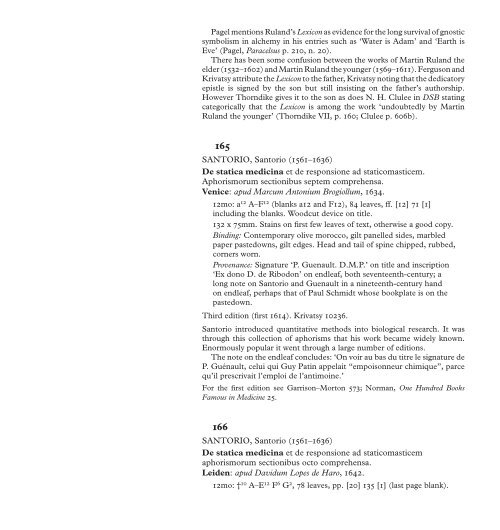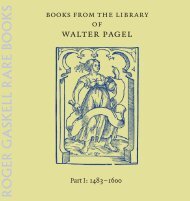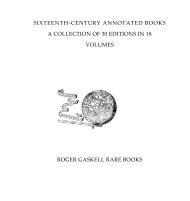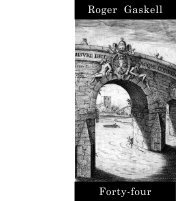pdf - Roger Gaskell Rare Books
pdf - Roger Gaskell Rare Books
pdf - Roger Gaskell Rare Books
You also want an ePaper? Increase the reach of your titles
YUMPU automatically turns print PDFs into web optimized ePapers that Google loves.
Pagel mentions Ruland’s Lexicon as evidence for the long survival of gnostic<br />
symbolism in alchemy in his entries such as ‘Water is Adam’ and ‘Earth is<br />
Eve’ (Pagel, Paracelsus p. 210, n. 20).<br />
There has been some confusion between the works of Martin Ruland the<br />
elder (1532–1602) and Martin Ruland the younger (1569–1611). Ferguson and<br />
Krivatsy attribute the Lexicon to the father, Krivatsy noting that the dedicatory<br />
epistle is signed by the son but still insisting on the father’s authorship.<br />
However Thorndike gives it to the son as does N. H. Clulee in DSB stating<br />
categorically that the Lexicon is among the work ‘undoubtedly by Martin<br />
Ruland the younger’ (Thorndike VII, p. 160; Clulee p. 606b).<br />
165<br />
SANTORIO, Santorio (1561–1636)<br />
De statica medicina et de responsione ad staticomasticem.<br />
Aphorismorum sectionibus septem comprehensa.<br />
Venice: apud Marcum Antonium Brogiollum, 1634.<br />
12mo: a12 A–F12 (blanks a12 and F12), 84 leaves, V. [12] 71 [1]<br />
including the blanks. Woodcut device on title.<br />
132 x 75mm. Stains on Wrst few leaves of text, otherwise a good copy.<br />
Binding: Contemporary olive morocco, gilt panelled sides, marbled<br />
paper pastedowns, gilt edges. Head and tail of spine chipped, rubbed,<br />
corners worn.<br />
Provenance: Signature ‘P. Guenault. D.M.P.’ on title and inscription<br />
‘Ex dono D. de Ribodon’ on endleaf, both seventeenthcentury; a<br />
long note on Santorio and Guenault in a nineteenthcentury hand<br />
on endleaf, perhaps that of Paul Schmidt whose bookplate is on the<br />
pastedown.<br />
Third edition (Wrst 1614). Krivatsy 10236.<br />
Santorio introduced quantitative methods into biological research. It was<br />
through this collection of aphorisms that his work became widely known.<br />
Enormously popular it went through a large number of editions.<br />
The note on the endleaf concludes: ‘On voir au bas du titre le signature de<br />
P. Guénault, celui qui Guy Patin appelait “empoisonneur chimique”, parce<br />
qu’il prescrivait l’emploi de l’antimoine.’<br />
For the Wrst edition see Garrison–Morton 573; Norman, One Hundred <strong>Books</strong><br />
Famous in Medicine 25.<br />
166<br />
SANTORIO, Santorio (1561–1636)<br />
De statica medicina et de responsione ad staticomasticem<br />
aphorismorum sectionibus octo comprehensa.<br />
Leiden: apud Davidum Lopes de Haro, 1642.<br />
12mo: † 10 A–E 12 F 6 G 2 , 78 leaves, pp. [20] 135 [1] (last page blank).







